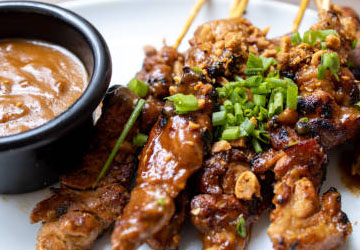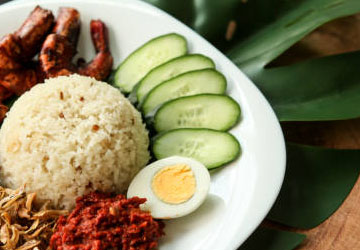7 Delicious Street Foods in Southeast Asia
Imagine walking through a bustling street, the aroma of spices teasing your senses, promising a symphony of flavors. If that’s a journey you wish to take, here’s a list of dishes that are not just food, but a story, a tradition, and a burst of passion and flavors combined.
1. Pad Thai (Thailand)
Pad Thai is not just a dish; it's an emblem of Thailand's vibrant street food culture.
Composed of stir-fried rice noodles intricately tossed with eggs, tofu, and shrimp or chicken, it's the tamarind sauce, fish sauce, and crushed peanuts that give Pad Thai its unique flavor profile.
Every mouthful offers a symphony of sweet, sour, and umami tastes. Most street vendors in Bangkok serve it in banana leaves, with the tangy aroma of lime and roasted peanuts wafting through.
Sharing a plate amidst the bustling streets, you'll quickly understand its wide-reaching appeal.
Remember, the real charm of Pad Thai lies in customization; ask for extra chilies if you like it hot or more sugar if you have a sweet tooth.
2. Pho (Vietnam)
Pho is more than just a noodle soup; it's the soul of Vietnam in a bowl. Originating from Northern Vietnam, Pho boasts flat rice noodles submerged in a fragrant beef or chicken broth, simmered for hours with spices like star anise and cinnamon.
Fresh herbs like basil, mint, and bean sprouts are added right before serving, with a slice of lime and a few chili peppers on the side.
Enjoying it in the early morning hours, with the misty streets of Hanoi as a backdrop, you can feel the deep-rooted history and the cultural significance it holds.
3. Satay (Indonesia)
Satay, Indonesia's celebrated skewered delicacy, showcases the country's mastery over the grill.
Tender pieces of meat, often chicken, beef, or mutton, are marinated in a mixture of lemongrass, turmeric, and coriander, then grilled over open coals. The smoky flavor, coupled with the iconic peanut sauce, is an absolute treat.
When in Bali or Jakarta, seek out nighttime street stalls; under the dim streetlights, enjoy satay with the symphony of sizzling skewers and animated chatter in the background.
4. Nasi Lemak (Malaysia)
An emblematic Malaysian dish, Nasi Lemak beautifully exemplifies the nation's multi-ethnic culinary influences. At its core, it's rice cooked in coconut milk, giving it a rich, creamy texture.
But it’s the accompaniments that truly elevate it. Sambal, a spicy chili paste, hard-boiled eggs, crispy anchovies, peanuts, and cucumber, all come together to create a feast of flavors.
Eating it wrapped in a banana leaf packet, as the sun rises in Kuala Lumpur, is truly an experience of a lifetime.
5. Halo-Halo (Philippines)
Halo-Halo translates to "mix-mix", a fitting name for this colorful and eclectic dessert.
A treat for the eyes and the palate, Halo-Halo is a medley of sweet beans, jellies, fruits like jackfruit and banana, topped with crushed ice, leche flan, and often a scoop of ube (purple yam) ice cream.
Every spoonful is a delightful surprise. As the tropical sun beats down in Manila, nothing refreshes the soul quite like a tall glass of Halo-Halo.
6. Mohinga (Myanmar)
An indispensable part of Myanmar's culinary scene, Mohinga is a hearty fish soup that holds the heart of many locals.
The rich, aromatic broth is created by simmering catfish with lemongrass, ginger, and garlic. Rice noodles, boiled eggs, and fritters are then added to make it a complete meal.
Mohinga isn't just breakfast; it's an expression of Myanmar's traditions and communal spirit.
7. Amok Trey (Cambodia)
Amok Trey is Cambodian culinary artistry at its best. Delicate pieces of fish are marinated in a rich paste of lemongrass, turmeric, and kaffir lime leaves, then steamed in banana leaves, creating a fragrant fish curry.
The blend of spices and coconut milk gives it a creamy, flavorful texture. Enjoyed best in Siem Reap's rustic settings, Amok Trey offers a taste of Cambodia's ancient traditions and culinary prowess.
Conclusion
So there you have it, a journey through the bustling streets of Southeast Asia, a journey not just of places but of flavors, aromas, and memories. Each dish tells a story, each flavor is an emotion, and each aroma a cherished memory.
As you plan your next food adventure, remember that these dishes are more than just food; they are a reflection of the rich tapestry of cultures and traditions that is Southeast Asia.
So, dear food traveler, where will your taste buds take you next?
